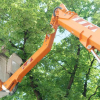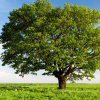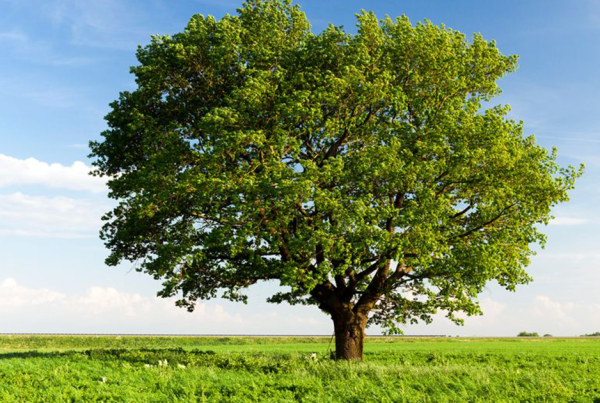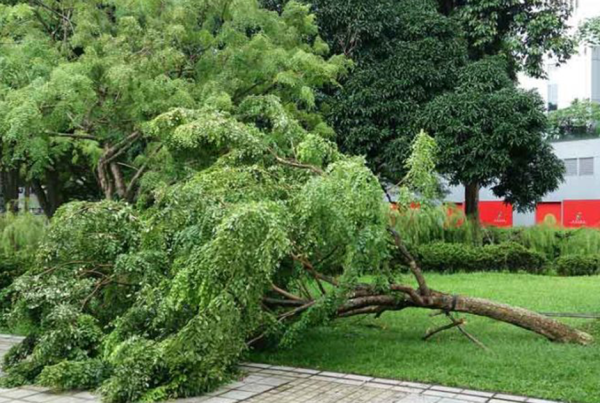
Lightning can undoubtedly be considered as one of the greatest threats to massive trees. As a matter of fact, every year, thousands of trees get struck by lightning. Moreover, it has long been proven that taking shelter under a tall tree in a thunderstorm is one of the most ill-advised things to do.
Being usually the tallest object around a given area makes a tree a natural lightning rod during tempestuous weather. There have even been recorded instances of trees getting blasted by lightning in sunny weather! And with more than 100 lightning strikes happening around the world every second, there’s a fairly good chance that your tree might get hit one of these days.
During spring and summer seasons, lightning strikes become more prevalent, and while not all trees attract lightning (short ones come to mind), it is critical that you learn how to assess lightning damage just in case your plant does get hit.
What Happens When A Tree Is Struck By Lightning?
When lightning blasts a tree, the impact can be felt instantaneously. The moment it hits, it turns the tree’s water into gas, causing the plant’s outer layers to explode outwards. This effect is catastrophic; 50% of trees hit by a bolt die immediately while others suffer extensive damage, making them vulnerable to diseases.
Among the most common tree species that get hit by lightning are oak, gum, maple, poplar, and pine trees.
Assessing The Degree of Damage
When a tree gets hit by lightning, there are three possible outcomes: The tree escapes damage; it suffers damage but survives with nothing but a scar; it dies.
The Tree Survives
Most of the trees’ water content is stored just under the bark. With water being a superb electrical conductor, the lightning strike will penetrate the outer layers of the tree obliterate them. Lightning blasts will typically scar a tree.
The Tree Escapes Damage
There are times when heavy rain has soaked the tree’s exterior. When this happens, there’s a chance that the lightning will just cascade around the tree and leave it relatively unscathed.
The Tree Dies
Dying trees—especially ones with an already compromised structure—will typically have one or more areas that are being ravaged by disease. Since these have most of their water content concentrated deeper in their trunk, any lightning strike can fully penetrate the plant’s center and utterly destroy the tree. This can cause a powerful explosion that will send large and small branches flying (including splinters and huge chunks of wood), and even split the trunk into two.
What To Do After Lightning Strikes Your Tree
Before you inspect the tree, know that there may still be a residual electric charge around the immediate area of the blast site; do not approach the tree immediately. Let a few minutes pass then take a look at the plant and assess the damage it received from the lightning strike.
- The first step that you should do in treating a damaged tree is by supplying its generous amounts of water.
- Make sure to provide fertilizer as well to help stimulate new growth.
Damaged trees that survive until the spring season are most likely to recover from a lightning strike. Know though, that while scarred barks and broken branches can be considered as minor issues, you have to check from time to time and see that the damage hasn’t spread—trees that have damaged layers become more vulnerable to certain pests and diseases.
- Another way that you can do to save a hit tree is by pruning the broken branches, including any torn wood. A word of caution, however: Do not do extensive pruning until a year has passed after the lightning strike.
For trees that have suffered extensive, irreparable damage, you need to remove them from your area especially if they are near healthy trees. Leaving them there can sometimes cause numerous arboreal threats to infect your healthy trees. Consult an expert tree removal team to help you get rid of the damaged tree.
Tree Protection Against Lightning Strikes
In order to prevent lightning from harming your trees, you may consider installing a lightning protection system that uses copper cables attached to the tree’s uppermost branches and grounded a few meters away from the tree.
Once the lightning strikes, the electricity will be diverted to the cable assembly, leaving your tree unscathed.










